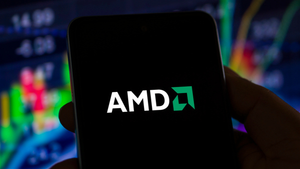
Peloton’s third quarter was marked by a positive market reaction, with management crediting new product introductions and improved operational discipline as key contributors to performance. CEO Peter Stern highlighted the launch of the Cross Training and Pro Series equipment lines, alongside the rollout of AI-powered Peloton IQ, as meaningful drivers. The quarter also saw ongoing cost reduction efforts and a successful shift toward higher-margin products, helping to offset seasonal hardware sales pressure and a decline in connected fitness subscribers.
Is now the time to buy PTON? Find out in our full research report (it’s free for active Edge members).
Peloton (PTON) Q3 CY2025 Highlights:
- Revenue: $550.8 million vs analyst estimates of $539.6 million (6% year-on-year decline, 2.1% beat)
- Adjusted EPS: $0.06 vs analyst estimates of $0.01 (significant beat)
- Adjusted EBITDA: $118.3 million vs analyst estimates of $97.41 million (21.5% margin, 21.4% beat)
- The company reconfirmed its revenue guidance for the full year of $2.45 billion at the midpoint
- EBITDA guidance for the full year is $450 million at the midpoint, above analyst estimates of $438.9 million
- Operating Margin: 7.5%, up from 2.1% in the same quarter last year
- Connected Fitness Subscribers: 2.73 million, down 164,000 year on year
- Market Capitalization: $3.12 billion
While we enjoy listening to the management's commentary, our favorite part of earnings calls are the analyst questions. Those are unscripted and can often highlight topics that management teams would rather avoid or topics where the answer is complicated. Here is what has caught our attention.
Our Top 5 Analyst Questions From Peloton’s Q3 Earnings Call
- Andrew Boone (Citizens Bank) asked about the differentiation between the recent recall and prior recalls. CEO Peter Stern explained the models affected and emphasized prompt availability of replacement parts, while CFO Liz Coddington noted only a minor expected impact on subscription churn.
- Arpine Kocharyan (UBS) questioned churn normalization post price increases. Stern replied that most churn spikes were short-lived and concentrated among less active members, with expectations of churn stabilizing over the year.
- Marni Lysaght (Macquarie Capital) inquired about free cash flow trends and inventory management. Coddington outlined that timing-related vendor payments contributed to outperformance, and that inventory buildup was balanced in anticipation of new product launches.
- Shweta Khajuria (Wolfe Research) asked about demand trends and the commercial market opportunity. Coddington acknowledged continued softness in U.S. connected fitness demand but highlighted growth potential in broader wellness and commercial segments.
- Bryan Smilek (JPMorgan) requested details on gross margin durability and marketing strategy. Coddington explained that product mix and cost savings are key levers for long-term double-digit margins, while Stern discussed shifting marketing spend toward brand and education for new product lines.
Catalysts in Upcoming Quarters
In the coming quarters, our analyst team will be focused on (1) monitoring the ramp-up and consumer adoption of new equipment lines and Peloton IQ features, (2) evaluating the effectiveness of expanded retail partnerships and micro store performance during the holiday season, and (3) tracking progress on cost reduction initiatives and gross margin improvement. The ongoing integration of wellness offerings and the commercial business expansion will also be key indicators of whether Peloton’s strategy is translating into sustainable growth.
Peloton currently trades at $7.47, up from $6.73 just before the earnings. At this price, is it a buy or sell? Find out in our full research report (it’s free for active Edge members).
Our Favorite Stocks Right Now
The market’s up big this year - but there’s a catch. Just 4 stocks account for half the S&P 500’s entire gain. That kind of concentration makes investors nervous, and for good reason. While everyone piles into the same crowded names, smart investors are hunting quality where no one’s looking - and paying a fraction of the price. Check out the high-quality names we’ve flagged in our Top 5 Growth Stocks for this month. This is a curated list of our High Quality stocks that have generated a market-beating return of 244% over the last five years (as of June 30, 2025).
Stocks that made our list in 2020 include now familiar names such as Nvidia (+1,545% between March 2020 and March 2025) as well as under-the-radar businesses like the once-small-cap company Comfort Systems (+782% five-year return). Find your next big winner with StockStory today.







